Events
- Others

15th A3 symposium on Emerging Materials
2025,11/13-15
Asia pacific Import Mart
- Symposium

The 3rd Public Symposium
2025/8/6
Online
- Others

The 4th Young Scientists' Networking Meeting
2025/6/11
Institute of Science Tokyo, Room 204, South Bldg. 2, Ookayama Campus,
About
Two-dimensional materials such as graphene can be stacked by van der Waals forces with arbitrary control of materials and angles, giving rise to a major paradigm shift in materials science because it provides a synthetic method that is not bound by conventional bonding. Furthermore, a unique two-dimensional nanospace exists between the layers of stacked two-dimensional materials, which can be the stage for new science. Therefore, by introducing the new ideas of “degree of freedom of accumulation” and “two-dimensional nanospace” to diverse two-dimensional materials, this field proposes “2.5D materials science: a paradigm shift in materials science toward social transformation,” which is a great leap forward from conventional research. In this field, we symbolically express the new possibilities of two dimensions plus α as 0.5 dimensions, and through an all-Japan structure, we will develop research that will revolutionize conventional materials science.
Groups

Administration of 2.5D Material Science
Material Creation for 2.5D Structures
Construction of 2.5D Integrated Structures
Development of Analysis Techniques for 2.5D Structures
Exploration of Novel Physical Properties of 2.5D Structures
Development of 2.5D Structures for Electronic, Photonic and Energy Applications
Research
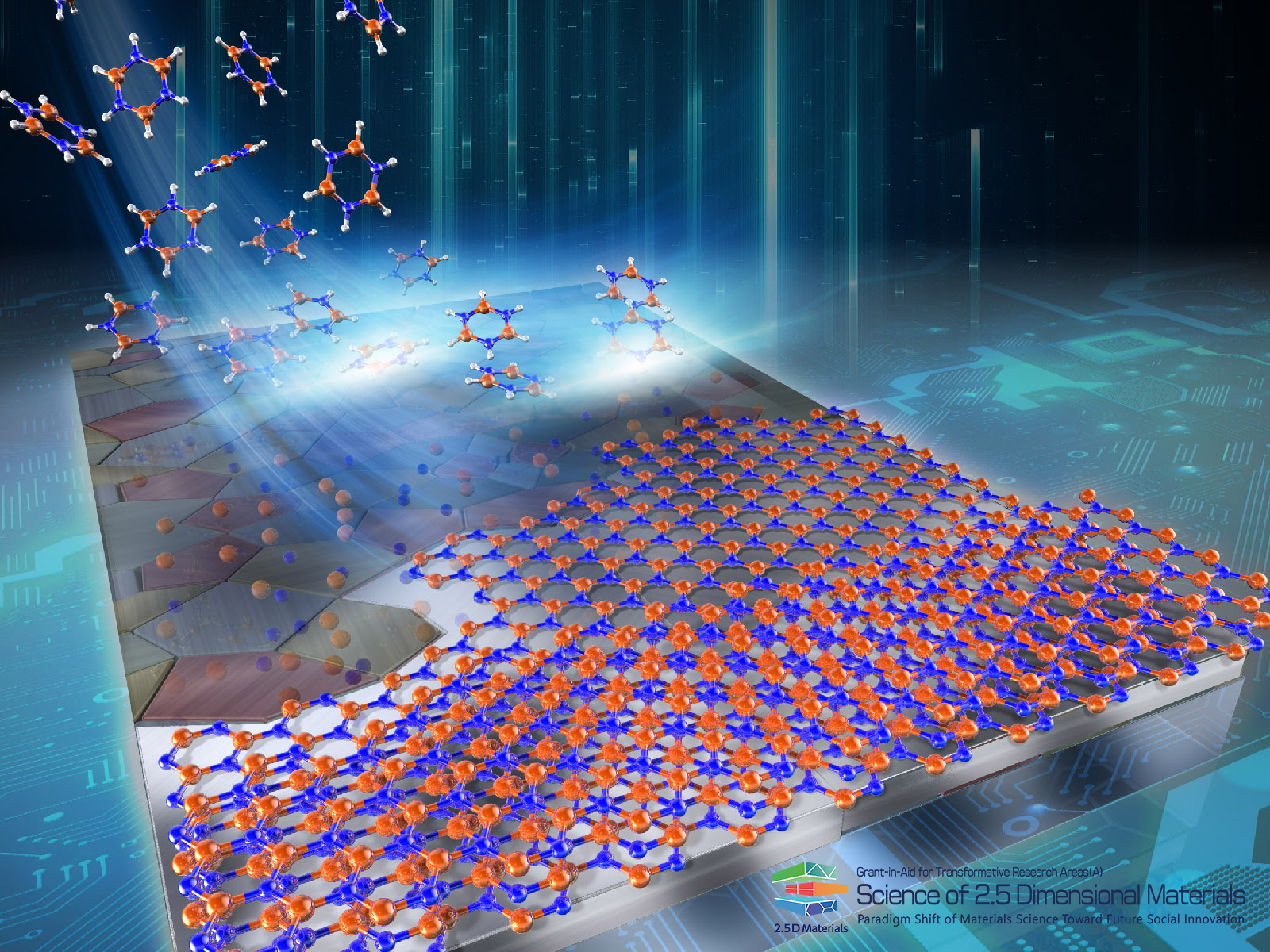
A01Material Creation for 2.5D Structures
We are mainly responsible for the design and synthesis of high-quality 2D materials that exhibit outstanding physical properties and unique characteristics, and create materials that will serve as building blocks for 2.5D materials science. We will conduct high-crystal and wafer-scale synthesis of 2D materials such as graphene, transition metal dichalcogenides (TMDC), and hexagonal boron nitride (h-BN), as well as research on crystal growth and fundamental science of new types of 2D materials showing exotic physical properties.
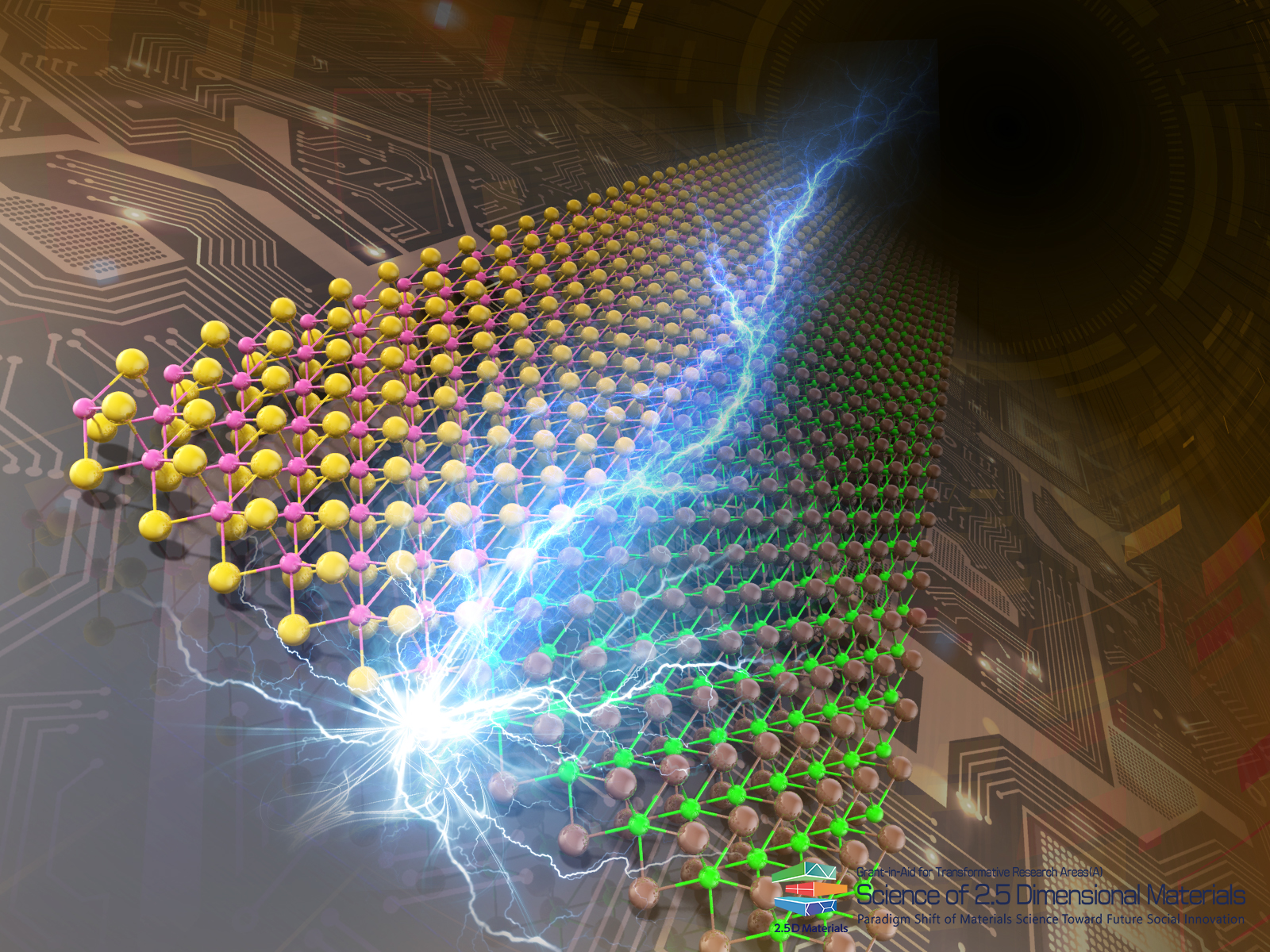
A02Construction of 2.5D Integrated Structures
Through the advancement and integration of individual proprietary technologies such as robotic stacking, liquid/vapor phase deposition, and intercalation, a variety of integrated structures will be fabricated.
Based on the samples provided by the Materials Creation Group, we will provide the integrated structures to the Analysis Group, the Physical Properties Group, and the Function Creation Group, and promote joint research on the control of electronic states, the search for novel quantum properties, and device applications.
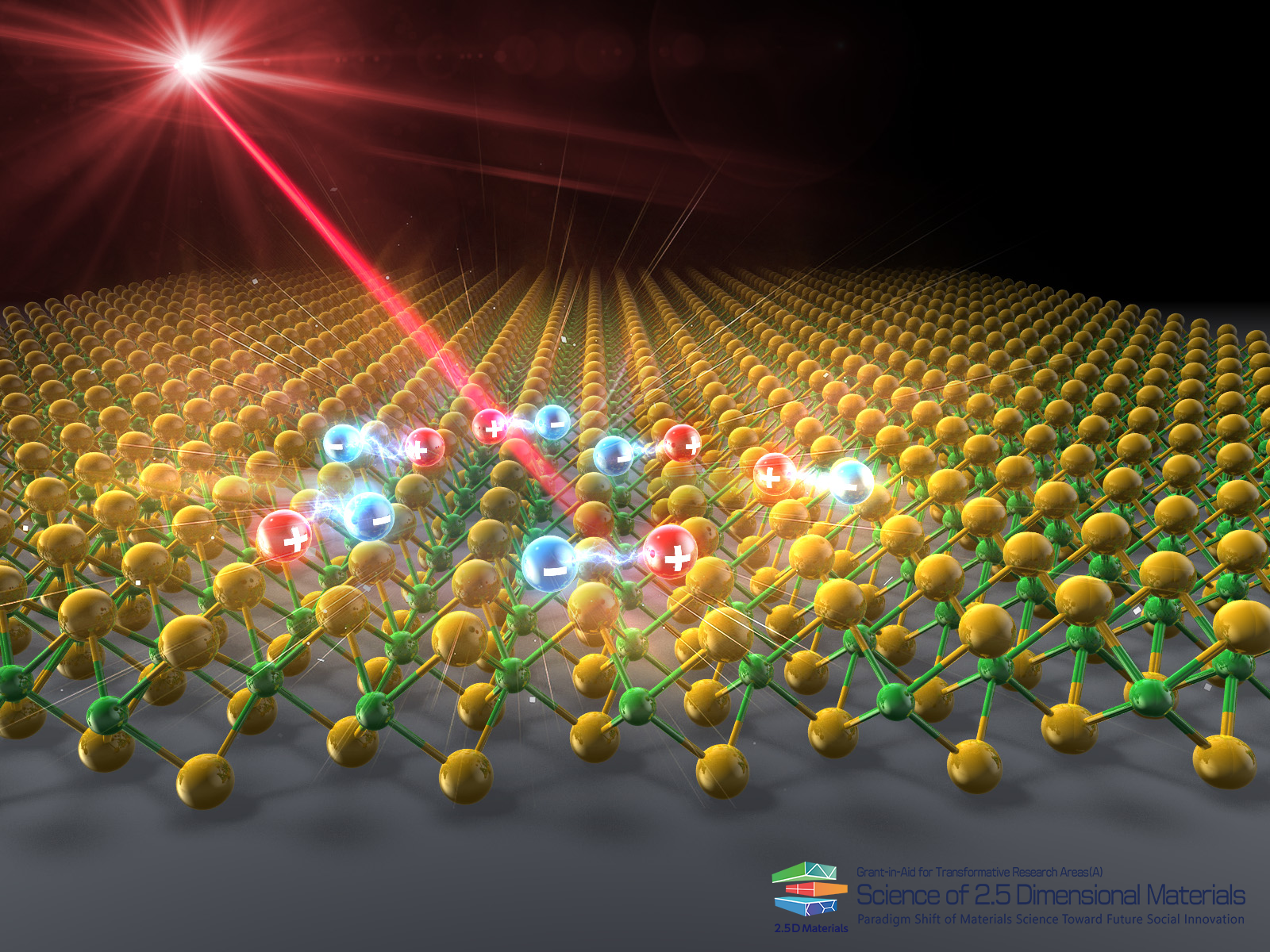
A03Development of Analysis Techniques for 2.5D Structures
We will develop analytical techniques to reveal the unique structures and electronic states that occur in 2.5D materials and support the academic development of 2.5D materials science.
Specifically, we will use various experimental probes (light, X-ray, electron microscopy, and electron spectroscopy) to study the electronic structure of 2.5D materials, such as the electronic state induced by moíre potentials from the angular stacking of degrees of freedom and the atomic arrangement structure in the unique 2D nanospace surrounded by 2D materials. We will advance evaluation techniques that will contribute to the promotion of research on 2.5-dimensional materials.
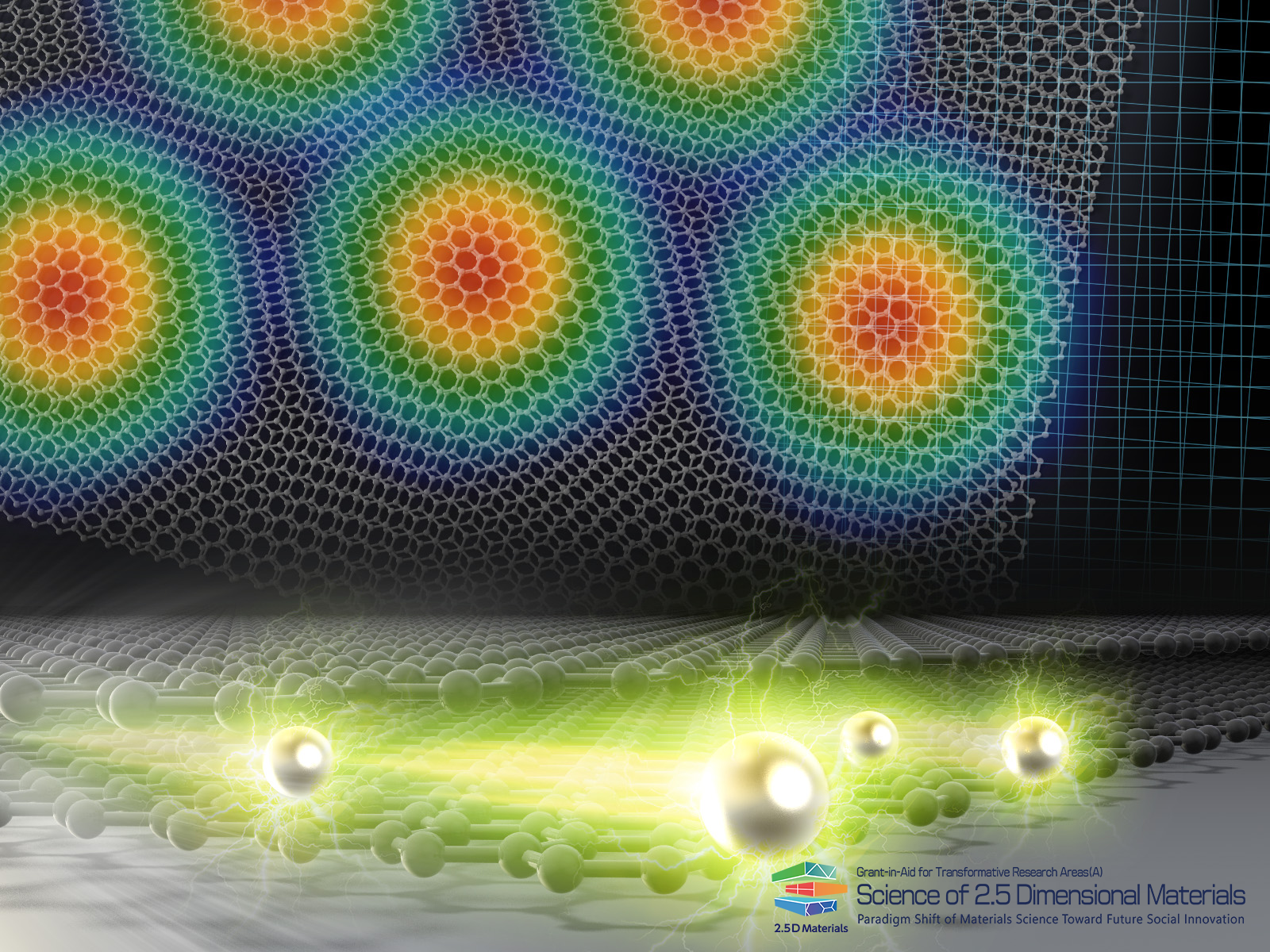
A04Exploration of Novel Physical Properties of 2.5D Structures
Our goal is to design and fabricate 2.5D materials by adding stacking and nanospace degrees of freedom to 2D materials, and to develop novel physical properties. In particular, we will create 2.5D materials with unimaginable electronic, optical, and phonon properties by making full use of materials engineering, experimental techniques, and theories of physical properties. Furthermore, we will develop a new theoretical system to handle 2.5D materials, which are difficult to describe by conventional crystal physics, and provide recommendations for experiments. Through these research activities, we will be responsible for constructing an academic theory of condensed matter science, which will serve as the foundation for “2.5D materials science.
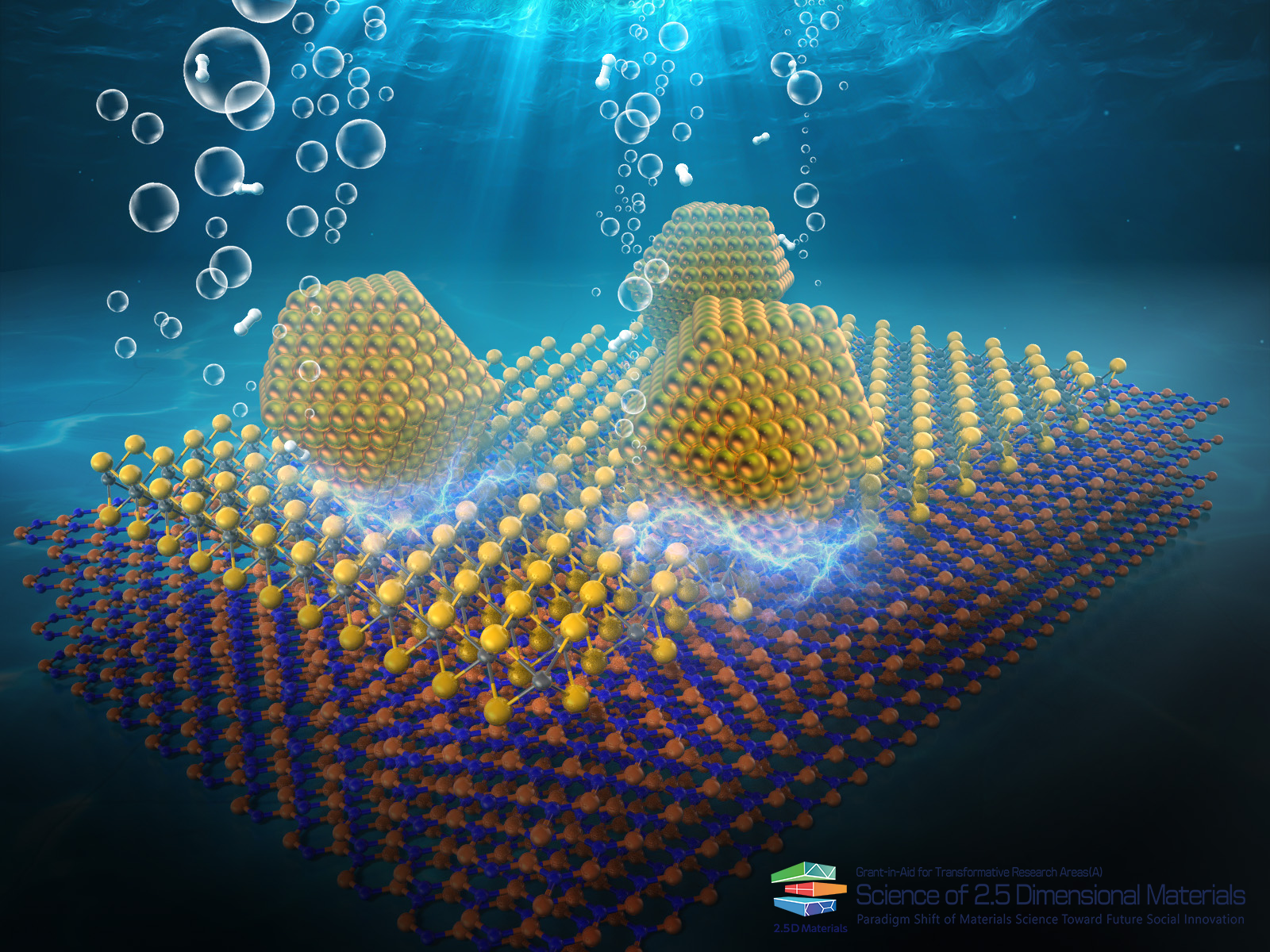
A05Development of 2.5D Structures for Electronic, Photonic and Energy Applications
In order to realize a paradigm shift in materials science toward social transformation, we will develop an image of what are the promising applications of 2.5D materials and how 2.5D materials can contribute to society. We will develop our research with this in mind. In particular, while controlling the “interface and space,” which is the common core that constitutes devices, we will create, explore the science of, and develop applications for electronic, optical, and energy devices that utilize integrated 2.5D materials.
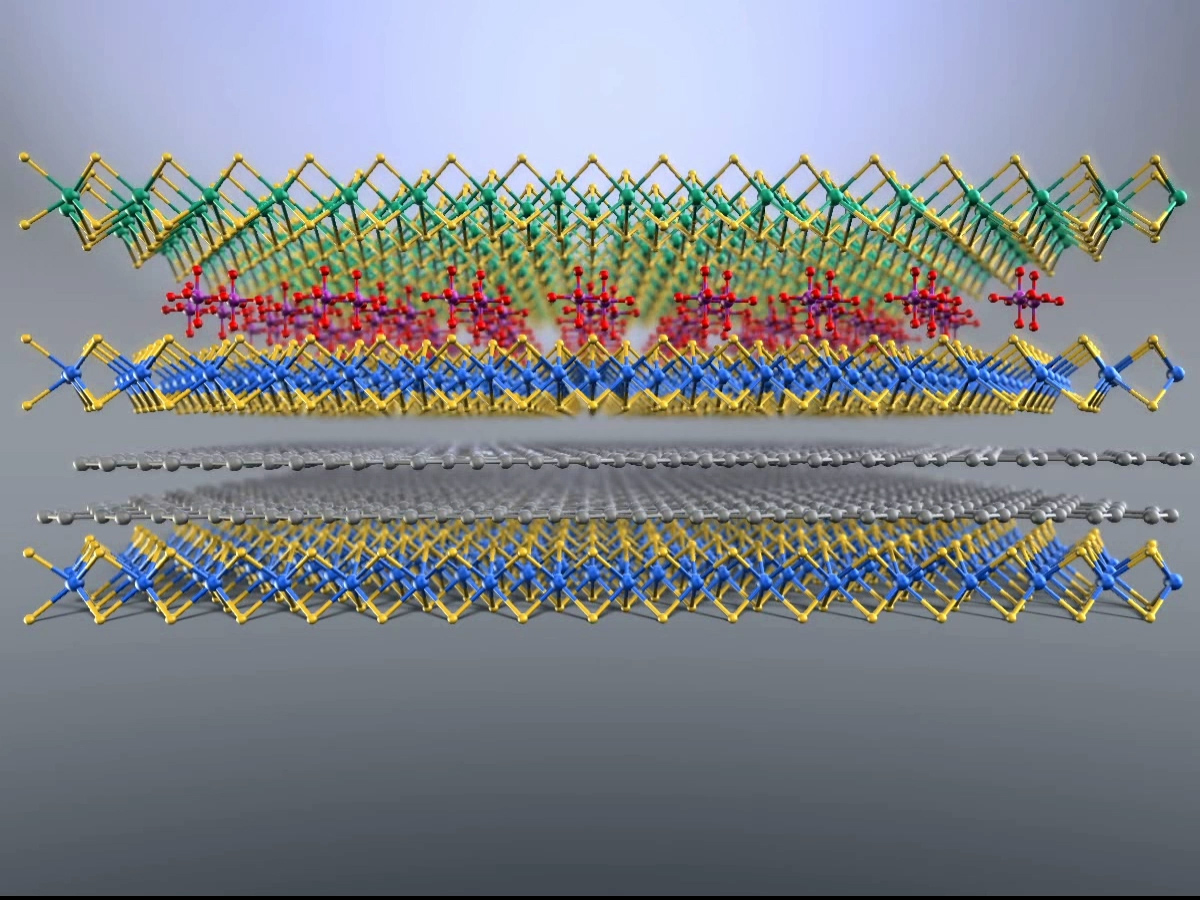




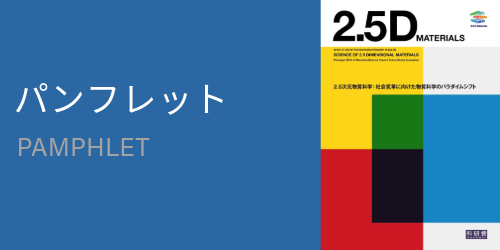



 Post
Post